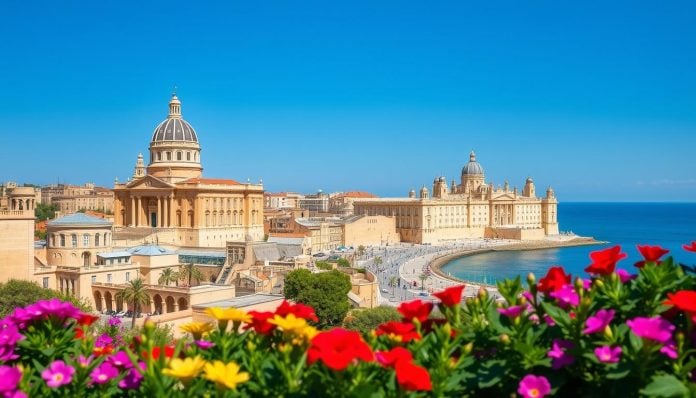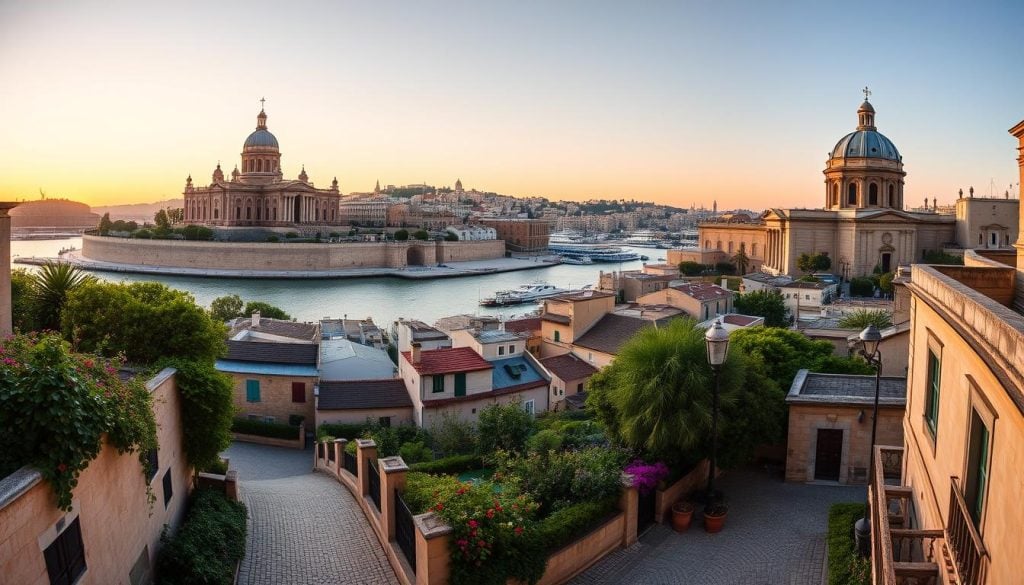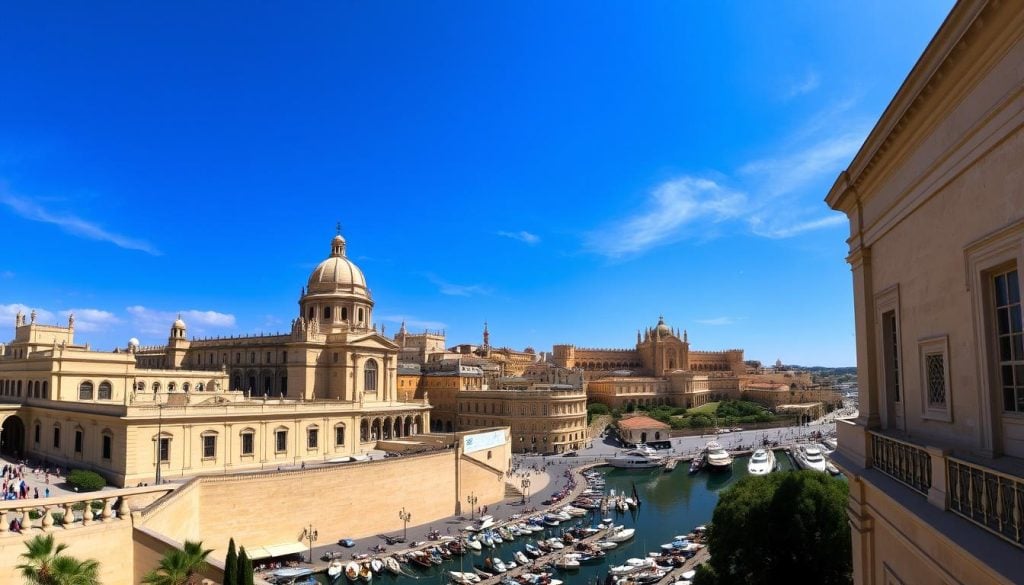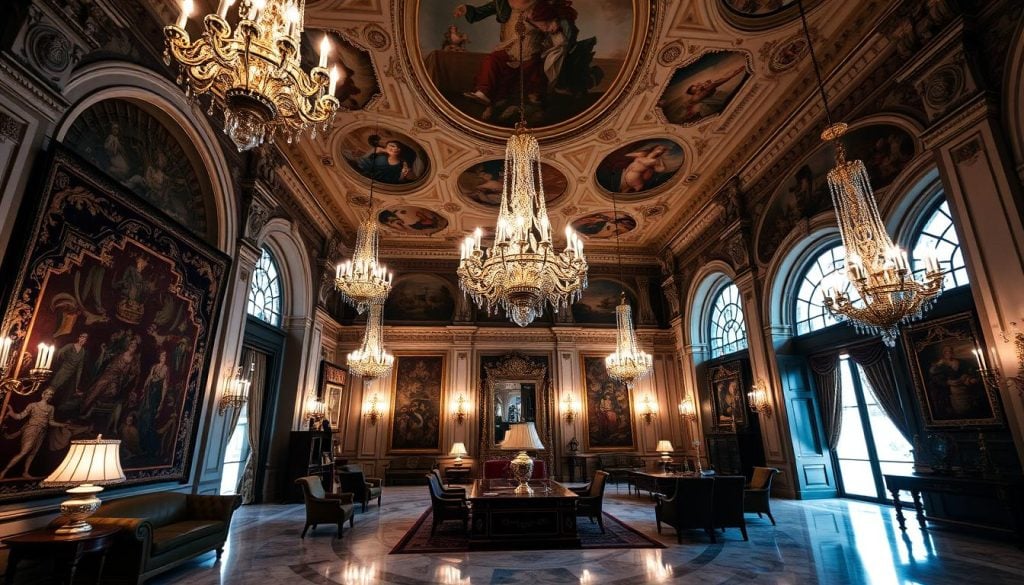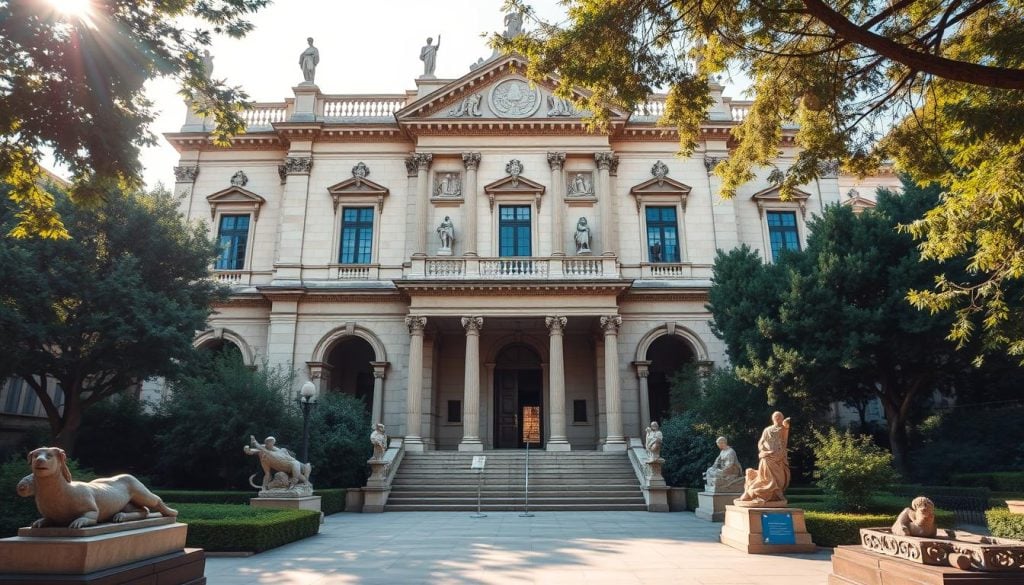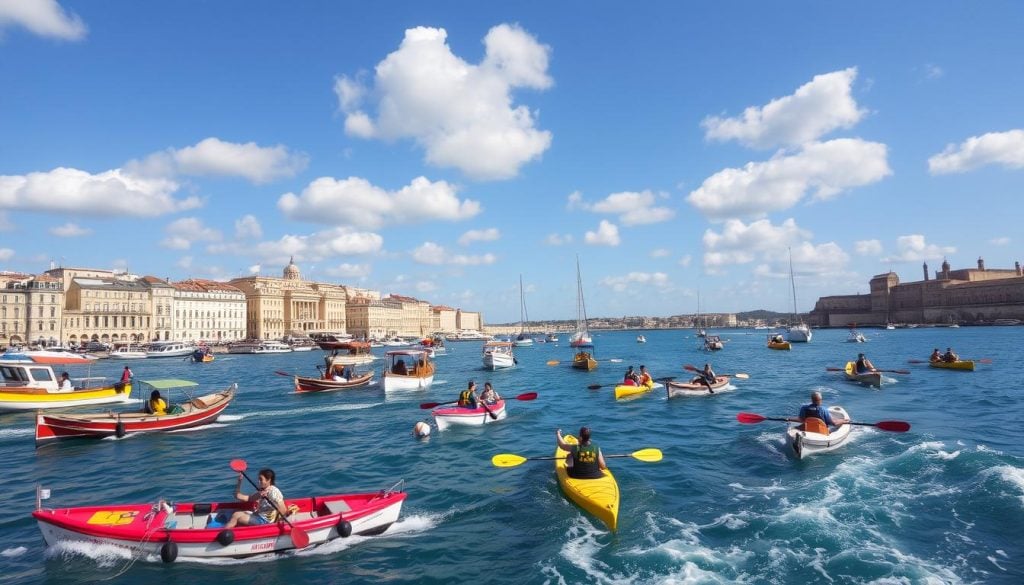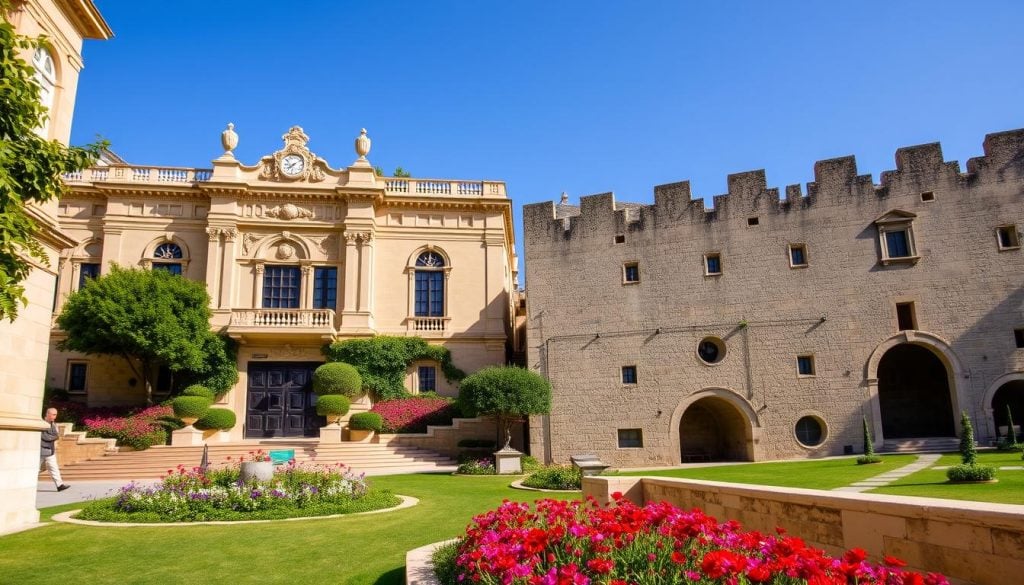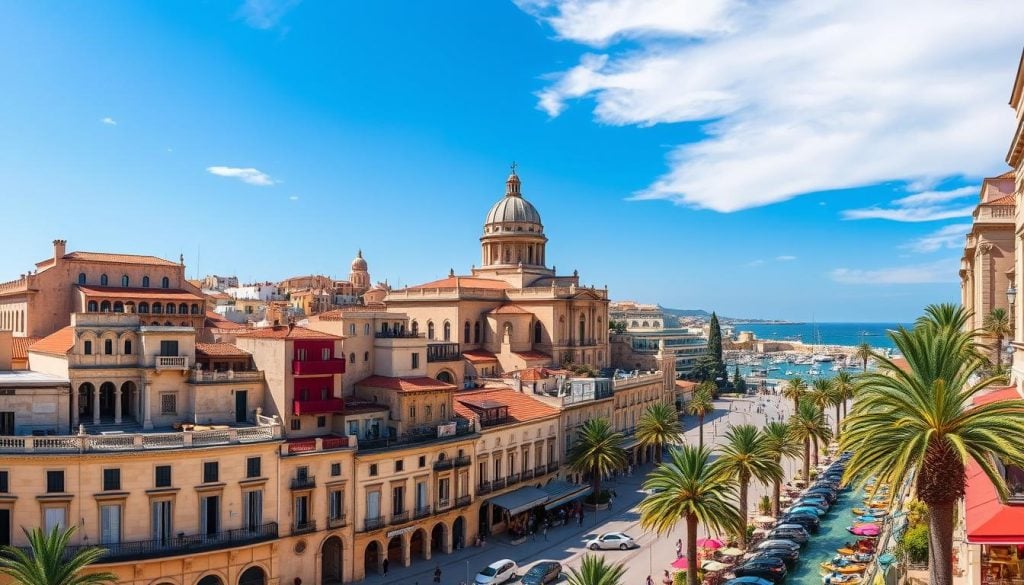Have you ever wondered how Valletta’s historic landmarks tell the city’s story? Valletta, in the heart of Malta, is more than a lively capital. It’s a city with a history shaped by many cultures, especially during the Knights of St. John’s rule. This article takes you on a journey to the most important Valletta attractions.
From the stunning St. John’s Co-Cathedral to the grand Grandmaster’s Palace, each place offers a special view into Valletta historical sites. They promise to spark your curiosity and make you appreciate this historic city even more.
Introduction to Valletta’s Rich History
Valletta’s history is filled with tales of bravery and cultural depth. Founded in 1566, it was born out of the Great Siege of 1565. The Knights of St. John showed their strength in defense, led by Grand Master Jean Parisot de la Valette.
The Knights of St. John ruled Malta from 1530 to 1798. They left a mark on the city through their architecture, faith, and art. Their work made Historic Valletta a UNESCO World Heritage site.
Walking through Valletta, you’ll see many historical moments. The city’s design shows military genius. Its churches and palaces show the Catholic faith’s big role in people’s lives. This history, full of victories and challenges, attracts visitors worldwide.
| Historical Event | Year | Significance |
|---|---|---|
| Foundation of Valletta | 1566 | Establishment of a new city following the Great Siege |
| Great Siege of Malta | 1565 | Demonstrated the Knights’ military strength |
| UNESCO World Heritage Status | 1980 | Recognition of Valletta’s historical and cultural significance |
Valletta Historic Landmarks: An Overview
Valletta is a city filled with history, offering a wealth of Valletta landmarks. These sites tell the stories that have shaped this city. You’ll find grand buildings and monuments that draw visitors from everywhere.
Exploring these Valletta points of interest shows the city’s diverse history. The architecture reflects Malta’s varied past. These landmarks are not just beautiful but also hold deep meaning for the nation.
Valletta is perfect for those who love history and culture. Every corner has a new historic site in Valletta to discover. As you wander, the city’s streets will lead you through its rich history.
| Landmark | Description | Significance |
|---|---|---|
| St. John’s Co-Cathedral | A stunning example of Baroque architecture featuring intricate designs and artworks. | Home to Caravaggio’s famous painting, “The Beheading of Saint John the Baptist.” |
| Grandmaster’s Palace | The former residence of the Grandmasters of the Knights of St. John. | Symbolizes the political history of Malta and houses the Office of the President. |
| Fort St. Elmo | A 16th-century fort that played a crucial role during the Great Siege of 1565. | Houses the National War Museum, showcasing Malta’s military history. |
Valletta’s landmarks offer a deep look into Malta’s past. They promise unforgettable experiences for all who visit.
St. John’s Co-Cathedral: A Masterpiece of Baroque Architecture
St. John’s Co-Cathedral is a stunning example of Baroque architecture. It draws visitors with its grandeur and detailed designs. This place is not just a church but also a cultural gem with amazing art, like Caravaggio’s paintings.
Its lavish design shows the Knights of St. John’s wealth and power. They built it in the late 16th century.
The Artistic Legacy of Caravaggio
Caravaggio’s artwork is a highlight at St. John’s Co-Cathedral. “The Beheading of Saint John the Baptist” is a masterpiece. It shows Caravaggio’s skill with light and shadow.
This painting is considered one of his best works. Visitors are amazed by its emotional depth and dramatic intensity.
Interior Features and Historical Significance
The inside of St. John’s Co-Cathedral is just as impressive. It has beautifully decorated chapels and stunning marble floors. The Baroque architecture is clear in the ornate ceilings, intricate carvings, and vibrant frescoes.
This cathedral is not just a building. It represents the religious zeal and artistic achievements of its time.
St. John’s Co-Cathedral is a key part of Valletta’s heritage. It combines history, art, and architecture in a stunning way.
Grandmaster’s Palace: The Heart of Valletta
The Grandmaster’s Palace is a key part of Valletta’s history. It was built soon after the city was founded. It was the home of the Knights of St. John. Its design shows a mix of Renaissance and Baroque styles.
Historical Context and Architectural Details
This grand palace was once the Grand Master’s home. It symbolized power and authority. Over time, it has been updated to reflect changing tastes.
The outside is stunning, with detailed balconies and stonework. Inside, you’ll find stories of Malta’s past. These stories include bravery, conflict, and victory.
Exploring the Palace State Rooms
The Palace State Rooms take you back in time. They are filled with tapestries, paintings, and artifacts. Each room shows Malta’s noble history.
The rooms’ beauty highlights the palace’s importance. It’s a key part of Valletta’s heritage.
| Room Name | Features | Historical Significance |
|---|---|---|
| Reception Room | Lavish decor, grand chandelier | Host to important diplomatic events |
| Armoury | Diverse collection of weaponry | Reflects military history |
| Grand Master’s Office | Richly decorated, historic furniture | Functioned as a decision-making space |
| Hall of the Knights | Portraits of Grand Masters | Cultural and political significance |
Upper Barrakka Gardens: Scenic Beauty Meets History
Visiting the Upper Barrakka Gardens is like stepping back in time. These gardens were started by the Knights of St. John in 1661. They offer more than just *scenic views*. The gardens are filled with lush greenery, colorful flowers, and soothing fountains.
Origins and Design of the Gardens
The Upper Barrakka Gardens show off the Baroque style. They are designed for both beauty and use. You can take a leisurely walk and see the detailed work in every spot.
The gardens highlight the skill of the past. They feature plants that add to Valletta’s beauty.
Unique Views and Attractions within the Gardens
The Upper Barrakka Gardens are famous for their *scenic views* of the Grand Harbour. You can see ships and fortifications. The daily cannon salutes add to the experience.
This event brings history to life. It attracts visitors from everywhere. They come to see the beautiful *historical gardens*.
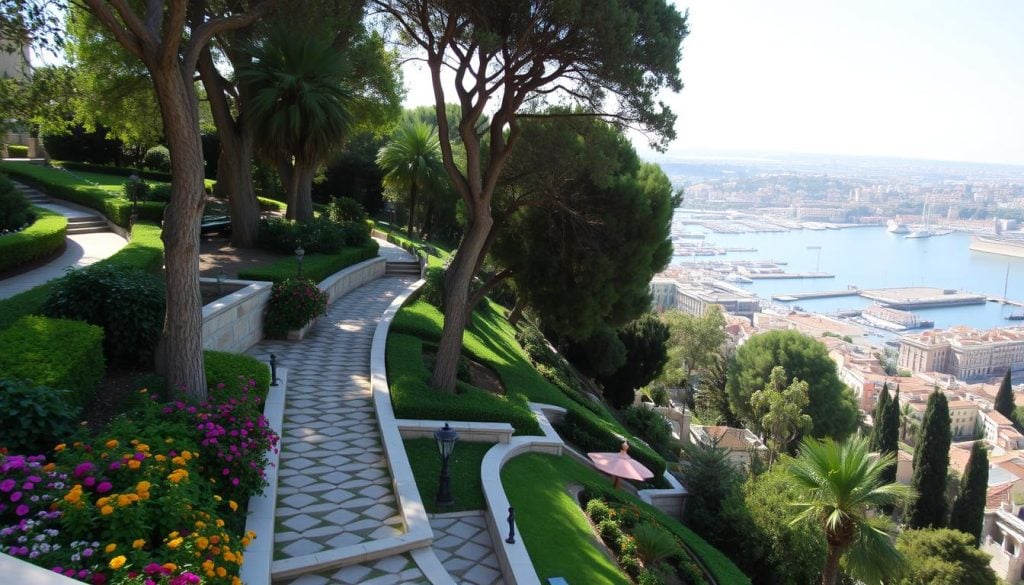
National Museum of Archaeology: A Journey Through Time
The National Museum of Archaeology is a key to Malta’s history. It’s in a beautifully restored Baroque building. It has a vast collection of artifacts that tell Malta’s story over thousands of years.
Highlights of the Archaeological Collection
This museum showcases Malta’s early civilizations. You’ll see:
- Remarkable clay figures that show the ancient people’s artistic talent.
- Prehistoric temples that demonstrate advanced building skills.
- Tools and pottery that give a glimpse into daily life through the ages.
Understanding Malta’s Prehistoric Era
Visiting the National Museum of Archaeology lets you dive into Malta’s past. It helps you understand how ancient societies lived and interacted. You’ll see how these early people shaped Malta’s culture and history.
Fort St. Elmo: A Testament to Military Bravery
Fort St. Elmo is a symbol of bravery in military history. It played a key role in the Great Siege of Malta in 1565. The fort’s design and location made it a strong defense against invaders.
Its spot at the Sciberras Peninsula helped control the seas and protect the harbor.
Historical Role During the Great Siege
During the Great Siege of Malta, Fort St. Elmo was a key battleground. It was built to stop the Ottoman Empire’s naval attack. Despite heavy bombardment, the fort showed the strength of Maltese defenders.
The fall of Fort St. Elmo led to more battles, changing Malta’s military history.
Visiting the National War Museum
Now, Fort St. Elmo is home to the National War Museum. It tells Malta’s military story from ancient times to today. Visitors see uniforms, weapons, and artifacts from the Great Siege and other key events.
The museum shows the bravery of soldiers and how military tactics have changed over time.
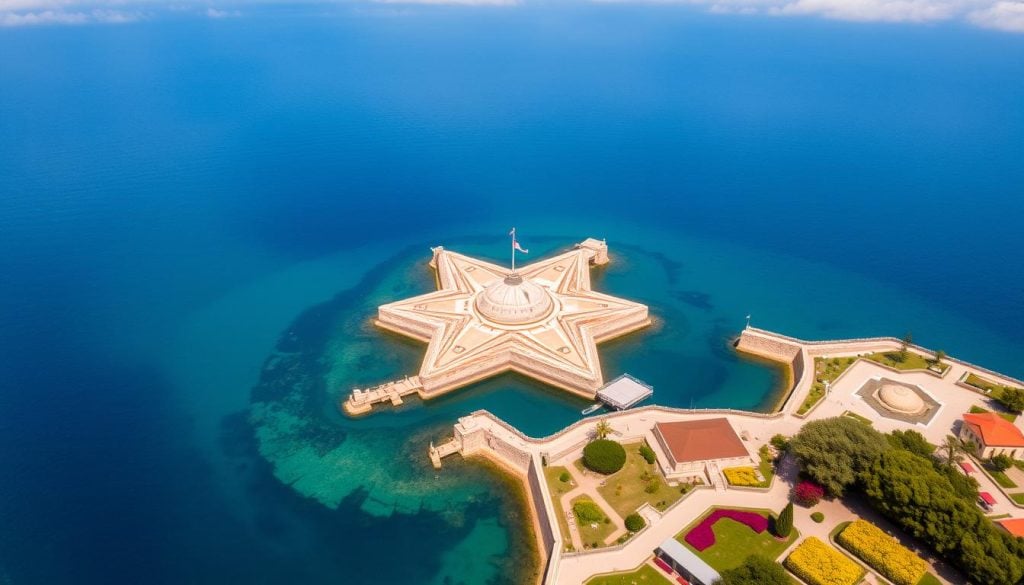
| Feature | Details |
|---|---|
| Location | Sciberras Peninsula, Valletta |
| Historical Significance | Key site during the Great Siege of Malta |
| Current Use | Houses the National War Museum |
| Visitor Experience | Exhibitions on Malta’s military history |
| Notable Exhibits | Artifacts from the Great Siege, military uniforms |
Exploring Valletta’s Grand Harbour: Historical Significance
Valletta’s Grand Harbour is a key part of Malta’s maritime history. Its strategic spot has been vital in many naval battles over the years. Exploring this area shows how the Grand Harbour has influenced Valletta’s growth and made it important in Mediterranean trade and defense.
The Role of the Harbour in Valletta’s Development
Grand Harbour has been important since ancient times. It has helped with trade and defended the island. Today, it mixes old history with modern city life, attracting visitors from everywhere.
Attractions and Activities by the Grand Harbour
There are many things to see and do by the Grand Harbour. You can enjoy water activities like:
- Boat tours that show off the skyline and historical sites.
- Fishing trips that let you try local traditions.
- Waterfront restaurants where you can eat Maltese food while watching the sunset.
Walking along the promenade, you’ll see history and fun activities together. This makes Valletta a great place to visit.
| Activity | Description | Duration |
|---|---|---|
| Boat Tour | Explore the historical landmarks from the water. | 1-2 hours |
| Fishing | Join local fishermen for a genuine experience. | 3-4 hours |
| Dining | Enjoy a meal with views of the harbour. | 2 hours |
Other Notable Valletta Attractions and Points of Interest
As you wander through Valletta’s lively streets, don’t miss out on more sights. Casa Rocca Piccola and the Lascaris War Rooms are must-sees. They showcase the city’s deep history.
Casa Rocca Piccola: A Glimpse into Nobility
Casa Rocca Piccola is a window into the lavish lives of Malta’s nobles. Built in the 16th century, it offers tours that take you back in time. You’ll see rooms filled with original furniture, art, and artifacts.
This tour gives you a peek into the lives of the aristocracy. It highlights their cultural and historical impact.
Lascaris War Rooms: Underground History
Explore Malta’s WWII history at the Lascaris War Rooms. This underground space was the military’s command center during the war. It’s a key part of Valletta’s history.
Walking through the tunnels and rooms, you’ll learn about the war’s challenges. The exhibits and displays are engaging and informative.
| Attraction | Type | Historical Significance | Visitor Experience |
|---|---|---|---|
| Casa Rocca Piccola | Noble Residence | Showcases Maltese aristocracy | Guided tours, luxurious artifacts |
| Lascaris War Rooms | Military Complex | Strategic operations during WWII | Interactive displays, underground exploration |
Experiencing Valletta: Travel Tips and Recommendations
Valletta, Malta’s vibrant capital, is full of experiences for those who love culture and history. To get the most out of your trip, here are some travel tips for Valletta. They cover the best times to visit, local events, and where to eat.
Best Times to Visit and Local Events
Valletta has a Mediterranean climate. Spring (April to June) and fall (September to October) are the best times to visit. You’ll enjoy mild weather and fewer crowds.
The city has many local events all year. Some highlights include:
- Malta International Fireworks Festival (April)
- Valletta Film Festival (June)
- Feast of St. Dominic (August)
These events are a great way to dive into Maltese culture and see Valletta’s historic sites.
Dining and Other Attractions for Tourists
Dining in Valletta offers a mix of Maltese and international dishes. Some top places to eat are:
| Restaurant | Cuisine Type | Location |
|---|---|---|
| Brown’s | European | Strada Stretta, Valletta |
| Il-Horza | Maltese | Battaglia Regular, Valletta |
| Guzé Bistro | Mediterranean | St. John Street, Valletta |
Valletta also has art galleries, historic sites, and beautiful waterfronts. Exploring these will add to your dining experiences.
Conclusion
Valletta is a place where history comes alive in every corner. Its ancient streets and buildings tell stories of Malta’s past. You can feel the island’s spirit and charm as you explore.
When you visit Valletta, you’ll find many amazing things to see and do. From the beautiful St. John’s Co-Cathedral to the peaceful Upper Barrakka Gardens, each landmark has its own story. Make sure to plan your trip well to enjoy all that Valletta has to offer.
Your trip to this UNESCO World Heritage site will be memorable. By exploring Valletta’s historic sites, you help keep its legacy alive. This way, future generations can also be inspired by this incredible city.

































